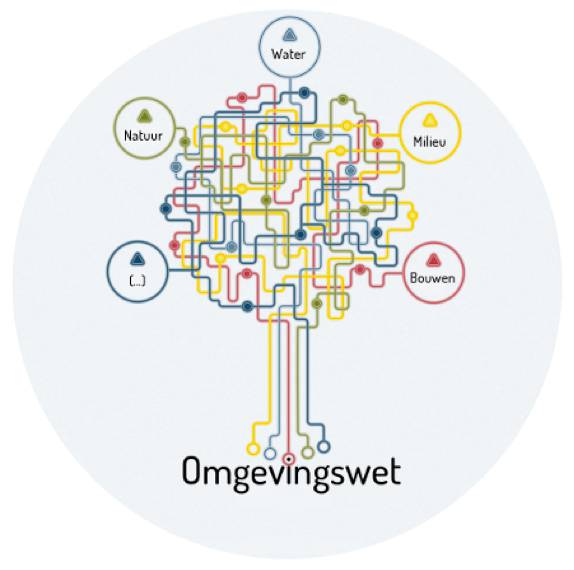Cookies
Van Hall Larenstein treats its customers' information with the utmost care and will never make this information available to third parties. Read more about us Privacy and Cookie Policy

Van Hall Larenstein University of Applied Sciences (HVHL) has worked with the Vallei and Veluwe Water Board for many years. This partnership will be further developed over the next few years through Paul van Eijk’s applied research group on Sustainable Water Systems in the Environment and Planning Act. A significant feature of this partnership is that professor Paul van Eijk is also responsible for Vallei and Veluwe Water Board’s Environment and Planning Act Implementation change programme. It means that practical questions about the Environment and Planning Act can be easily linked to theory, research and teaching. The aim is to work in a cross-disciplinary way within the applied research group. This involves clients, governments, lecturers and students from different disciplines conducting research together, and inviting community participation where necessary. An Xplorelab and a data-driven local workshop with all the required digital facilities have been made available at the Water Board in Apeldoorn to enable the research to be carried out.
Why focus specifically on water in relation to the Environment and Planning Act? The Environment and Planning Act is a very socially relevant topic. All government agencies and public bodies are currently working hard to get the new Environment and Planning Act implemented by 1 January 2021. One of the biggest changes, other than the integration of a large number of laws, is that government agencies and public bodies, along with private partners, will now really have to collaborate on sustainable development and on protecting the quality of our living environment. These objectives will need to be anchored in various core instruments such as spatial planning and environment visions, plans and programmes.
Some core concepts associated with this are: complexity, cultural change, planning-by-invitation, participation, co-creative planning processes and policymaking space. The challenge for the Water Board is to literally and figuratively map out this complexity as it pertains to water. The applied research group is helping with this by approaching the water challenge from a collective perspective and using training and research to provide impetus to the implementation of the Environment and Planning Act.

The Environment and Planning Act can be interpreted as a spatial transition challenge with an implementation deadline of 2029. The applied research group is linking this transition challenge to the water transition challenge, which is focused on how we can safeguard water levels and water quality. The group approaches this from the perspective of water sources, regions, and actors. After all, water is an important factor in determining the quality of our living environment. The applied research group researches the acquisition of theoretical and practical knowledge, tools, insights and skills related to the sustainable development and management of water systems in the context of the Environment and Planning Act.
The applied research group works closely with the study programmes for Land and Water Management, Management of the Living Environment, Garden and Landscape Design, and Environmental Studies, but also with WUR, provincial authorities, municipalities, water boards, the CAS Foundation and agencies such as Over Morgen. For example, we’re working together on research into the internal and external impact of the Water Board’s planning and environment vision (the Blue Environmental Vision) as well as on how a water-based environmental plan can come about (a project for KCNL, the Knowledge Centre on Nature and Living Environments). Students are also working on an impact analysis of the Environment and Planning Act on the Circular Water Chain and on the relationship between spatial adaptation to climate change and the Environment and Planning Act. Research is also being conducted into how the Food Valley region can design the Valleikanaal (Valley Canal) as a climate canal in the spirit of the Environment and Planning Act. In partnership with the Water Board, we’re organising Environment and Planning Act cafes and working with virtual reality and serious gaming in the ‘Ja, Mits Capsule’.
VHL
Professor dr. Paul J. van Eijk, [email protected] or [email protected]
Mr. Peter Groenhuijzen, [email protected]
Dr. ir. Jan Fliervoet, [email protected]
